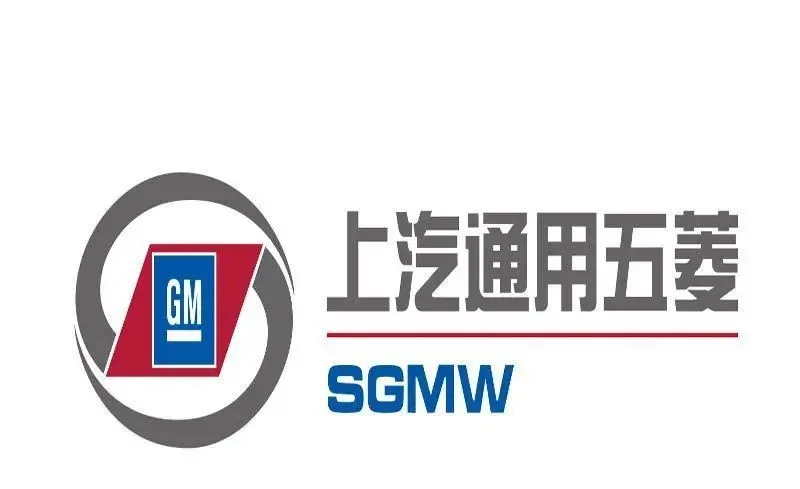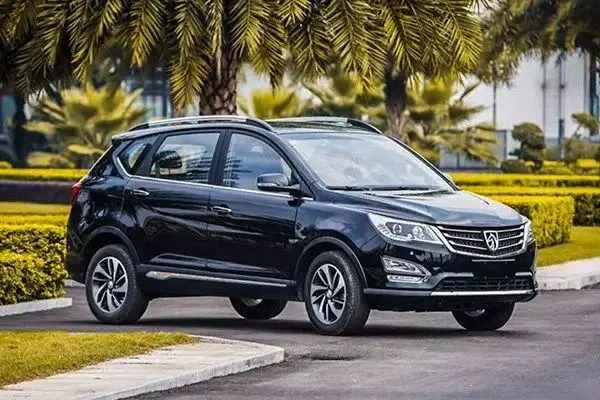Author: Wang Yunpeng
Masks, snail noodles, dedicated street vendor vehicles, co-branded Hey Tea, Hong Guang MINI EV… Since the beginning of 2020, SAIC-GM-Wuling seems to have been constantly on the trending list.
The continuous buzz has not only given the industry a glimpse of the new atmosphere of a traditional car company, but also propelled SAIC-GM-Wuling to the top in 2020. According to statistics, SAIC-GM-Wuling’s cumulative sales exceed 1.6 million vehicles in 2020, making it the best-selling brand within SAIC Group.

However, the publicity and success could not conceal the embarrassing reality of this “internet celebrity” in the automotive industry. Underneath the seemingly lively surface, SAIC-GM-Wuling’s long-standing problem of low-end branding and low profitability still persists.
And that is indeed the case.
On March 25, SAIC Group released its 2020 financial report. The report showed that SAIC-GM-Wuling’s net profit in 2020 was only RMB 140 million, a decrease of more than 90% compared to RMB 1.699 billion in 2019.
Selling more, losing more
In fact, the cliff-like decline in SAIC-GM-Wuling’s profits in 2020 is not surprising.
Specifically, as early as the first half of 2020, SAIC-GM-Wuling’s revenue and net profit did not meet expectations. Public data shows that from January to June 2020, SAIC-GM-Wuling sold a total of 531,000 new cars, with total revenue of RMB 25.515 billion and a net loss of RMB 629 million. In contrast, SAIC Volkswagen and SAIC-GM, both belonging to SAIC Group, had a slower growth rate in the first half of the year than SAIC-GM-Wuling, but their net profits were significantly ahead.
After efforts in the second half of 2020, it was not easy for SAIC-GM-Wuling to recover its net profit to RMB 140 million.

With sales remaining high, why is SAIC-GM-Wuling “selling more and losing more”?
“The sharp drop in net profit may be related to the excessive investment in the brand’s upward strategy,” said car analyst Zhang Xiang. Following the promotion of the new Baojun in 2019, SAIC-GM-Wuling released the high-end brand Wuling Yinxing in May 2020 and invested heavily in publicity, channel upgrades, sales system upgrades, and corporate structure optimization, among other things, contributing to the decline in net profit.
In addition, SAIC-GM-Wuling’s long-term strategy of “exchanging price for quantity” in the industry may be another main reason for its sharp drop in net profit.It is worth mentioning that the industry’s views are not baseless. In July 2020, the Wuling Hongguang MINI EV was launched, with a selling price of only 28,800 to 38,800 yuan, making it almost the cheapest passenger car model in the domestic market. At the same time, it is easy to find that many models of the Baojun brand have different forms of discounts on the official website of SAIC-GM-Wuling, with the highest discount reaching nearly 10,000 yuan.
Although the official pricing of its models is already cheap enough, it seems that there is still room for further negotiations at the sales end. “The new Baojun series has different replacement subsidies and a cash discount of 5,000 yuan,” said a Wuling salesperson in an interview with the media.
In response, some senior industry insiders said that low pricing and large-scale price promotions can increase sales volume, but it also sacrifices profits. Moreover, relying too much on low-priced models to boost sales volume will make it more difficult for SAIC-GM-Wuling to upgrade its brand.
Knowing that “price for quantity” is not a long-term plan, why did SAIC-GM-Wuling launch low-priced models such as the Hongguang MINI EV to deepen its presence in the low-end market?
The answer is simple: to maintain sales volume.
According to SAIC production and sales data, in 2017, SAIC-GM-Wuling sold 2.15 million vehicles. In 2018, sales volume slightly decreased to 2.06 million, and further fell to 1.66 million in 2019, a decline of 19.42%. In 2020, despite the brand renewal and the launch of new cars such as the Hongguang MINI EV and Wuling Kaijie, SAIC-GM-Wuling’s sales volume continued to decline to 1.6 million vehicles.
Looking at the constantly declining sales trends, sales volume may be more important for SAIC-GM-Wuling than profits.
However, focusing only on sales volume has also brought bitter results to SAIC-GM-Wuling.
Data shows that in 2018, SAIC-GM-Wuling’s net profit began to enter a downward channel and fell to 4.187 billion yuan that year, a decline of more than 21.47%. In 2019, net profit continued to decline to 1.699 billion yuan. In 2020, under the condition of selling 1.6 million new cars, net profit was only 140 million yuan.
Faced with the embarrassing situation of high sales volume and low income, SAIC-GM-Wuling can only understand the feeling in their heart.
Can SAIC-GM-Wuling successfully move up and get out of the predicament in the face of the accelerated trend of consumption upgrade in the domestic automobile market?According to the official website of SGMW (SAIC-GM-Wuling) Motors, the brand currently offers 24 models of passenger cars in six categories, including sedans, SUVs, MPVs, mini cars, new energy vehicles, and the New Baojun. This diverse product lineup indicates that SGMW has the ability to continuously update and catch up with consumer demands in various fields.
However, this is not entirely true. Except for the six New Baojun models, the rest of the 18 models in the other five categories are positioned as low-end products. For instance, the SUV models such as Baojun 510 and Baojun 530 are priced between CNY 50,000 and CNY 120,000 (approx. USD 7,750 to USD 18,600), the MPV models such as Baojun 360 and Wuling Kaige are priced between CNY 50,000 and CNY 110,000 (approx. USD 7,750 to USD 17,000), the Wuling Hongguang series are priced between CNY 42,800 and CNY 81,800 (approx. USD 6,630 to USD 12,700), and the sedan models such as Baojun 310 and Baojun 310W are priced below CNY 72,800 (approx. USD 11,300). Furthermore, the price of Hongguang MINI EV in the new energy lineup is as low as CNY 28,800 (approx. USD 4,470).
Compared with the rich product offerings in the low-end market, New Baojun, which is positioned as a high-end brand, only sells six models, including the RC-5, RC-3, RM-5, RC-6, RS-5, and E300. However, from the performance of these six models, it seems that New Baojun’s overall performance in the high-end market is not as satisfactory as expected. According to the data released by the China Association of Automobile Manufacturers, the sales of New Baojun in the past six months are still mainly concentrated on the lower-priced RS-3. At the same time, the high price of RS-3, priced between CNY 63,800 and CNY 98,800 (approx. USD 9,880 to USD 15,335), makes it difficult to associate New Baojun with the concept of high-end.
Therefore, it is difficult for SGMW to change the “low-end” image of its brand, despite the technical support from SAIC and General Motors. In addition, the massive outbreak of product quality issues in the past has made it even more challenging for SGMW to move forward.
In the “3.15 Evening Party” in 2020, SGMW was the only automaker that was named due to the sudden power failure of the Baojun 560 during its driving process and its inadequate after-sales service.As the first SUV model of Baojun brand, the quality issue of Baojun 560 is far from the only problem. According to the recall information released by the Defective Product Management Center of the State Administration for Market Regulation, Baojun 560 has been recalled three times in over two years since its launch, namely in 2016, 2017 and 2019, with a total number of recalls exceeding 90% of the overall sales volume. In other words, nine out of ten Baojun 560s have had safety risks.
The impact of quality issues is the decline in sales and the further damage to the image of a already low-end brand. This can be seen from the successive “falling out of favor” of many car models such as Baojun 510, Baojun 310 and Baojun 360, and the failure of upscale brand New Baojun to succeed.
What is of greater concern is that due to the meager net profit, SAIC-GM-Wuling seems to have fallen into a vicious cycle of being unable to achieve breakthroughs in technology, which leads to the long-term hovering of the brand in the low-end market. With the net profit slipping again in 2020, this problem may further exacerbate.
In the future, as major domestic car companies are striving to rise and open up new growth points, whether SAIC-GM-Wuling can break through the predicament and succeed is still unknown.

This article is a translation by ChatGPT of a Chinese report from 42HOW. If you have any questions about it, please email bd@42how.com.